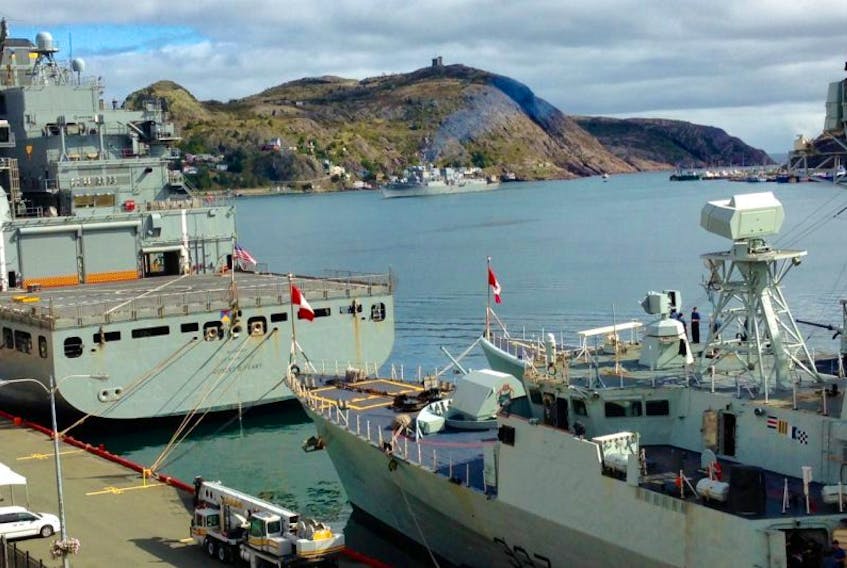The Canadian Forces is experimenting with a voice assistant that could be used on the bridge of combat vessels, but don’t expect to hear “Hey Siri, fire the guns!” aboard a warship anytime soon.
Under development in partnership with IBM and Lockheed Martin, the “Boatswain’s Mate” virtual bridge assistant is intended to function in essentially the same way as Apple Inc.’s Siri or Amazon.com Inc.’s Alexa, taking voice commands and then carrying out tasks in response.
Rear Admiral Casper Donovan, the director general of future ship capability for the Royal Canadian Navy, said the navy has been working on the idea for more than a year, but that they’re still at least another year away from conducting tests aboard a warship.
Donovan framed the project as an attempt to use artificial intelligence technology to improve the efficiency of a ship’s sailors.
For example, if a navy vessel is expecting a helicopter to land on the ship, the captain would normally give the order to prepare for landing to a sailor who would then relay the instruction throughout the ship.
The Boatswain’s Mate voice assistant is being designed to replace the sailor who would normally receive those verbal instructions, instead relaying the commands through the ship’s onboard computer system.
“A lot of that today is done with a commanding officer asking a boatswain’s mate to do this, then that boatswain’s mate has to understand the approach, then pipe the command, then write it on a piece of paper and audit everything,” said Charbel Safadi, AI leader for IBM Canada.
Safadi said running these commands through a computer system instead creates a data log that can be audited later, and it frees up a sailor who would otherwise be responsible for relaying instructions from the commanding officer.
While the Boatswain’s Mate is being designed for the bridge of a warship, potentially for use in actual combat situations, the intent is more similar to a private business trying to reduce the need for workers through the use of new technology.
But the project comes at a time when militaries around the world are figuring out how best to deploy AI technologies while navigating the thorny ethical issues that come with them.
In particular, Donovan said the navy is being careful to steer clear of the dilemmas raised by the potential of linking AI with lethal weapons systems.
“We haven’t explicitly told ourselves we have a red line, but there is clearly a red line, that we’re not pursuing any AI that is connected to employing weapon systems,” Donovan said.
“Our systems, especially our weapons systems, are under a chain of command and that chain of command is on people, and people are employing those systems.”
But depending on how broadly you define “artificial intelligence,” the technology is probably already finding its way into Canadian weapons systems, according to Warren Shiau, who focuses on artificial intelligence as research vice-president with IDC Canada.
“Artificial intelligence” is a bit of a loose catch-all term for many different technologies that use machine learning software to improve technology.
Voice assistants rely on AI to do speech recognition, but deep learning can also be embedded in anything from video games to human resources software to improve outcomes.
Shiau said AI is also being embedded in lots of military systems, too.
“Of course people are integrating into weapons systems, simply because it can help so much, on things like target identification, target acquisition or better calculation of flight paths and stuff like that for, say, cruise missiles,” he said.
“It’s not the Canadian government directly supporting it. It’s more that it comes in a weapons system and we could be buying that system.”
Shiau noted that like most big companies, militaries around the world are also looking at artificial intelligence tools to help them operate more efficiently and use fewer people to perform bureaucratic and administrative functions.
“Armed forces, they’re facing a severe manpower shortage,” he said.
“An armed forces can’t work without all the background logistics and administration. So if all your personnel need to be devoted to operational capability, who’s actually taking care of the shop?”
• Email: [email protected] | Twitter: jamespmcleod
Copyright Postmedia Network Inc., 2019









